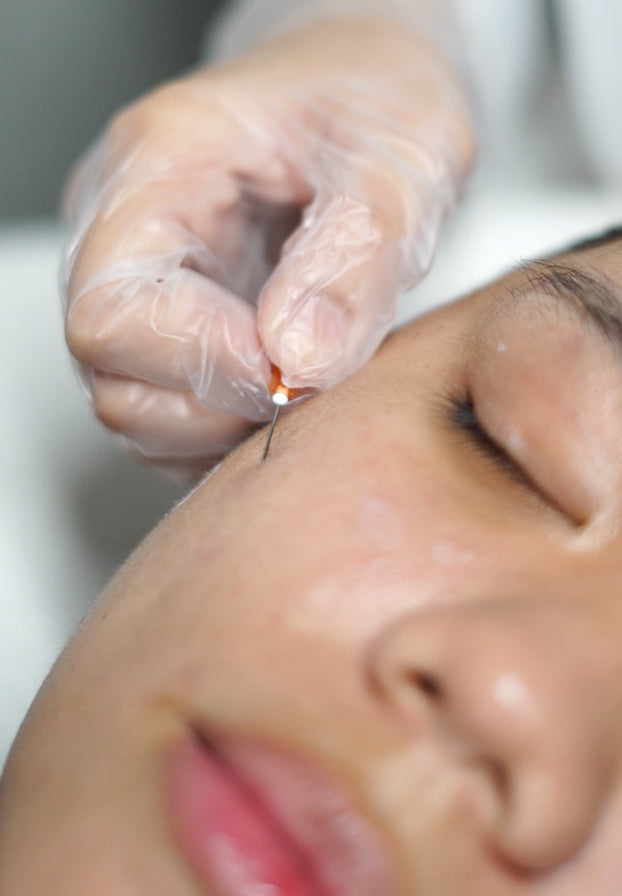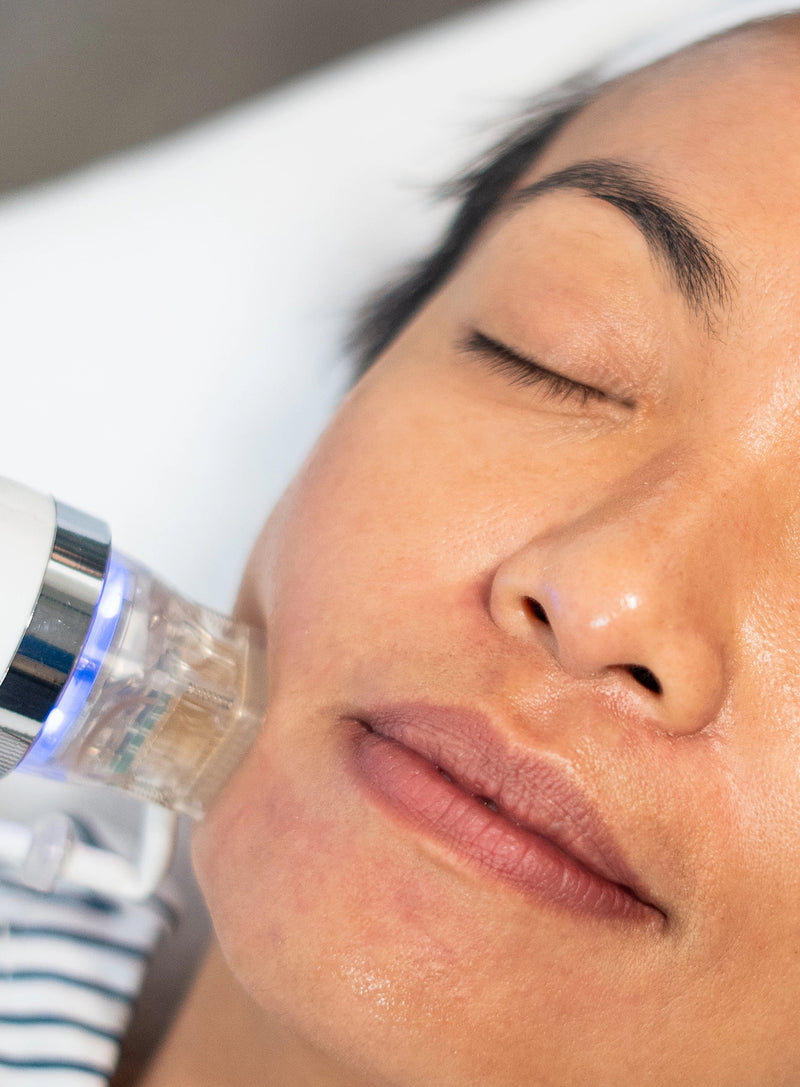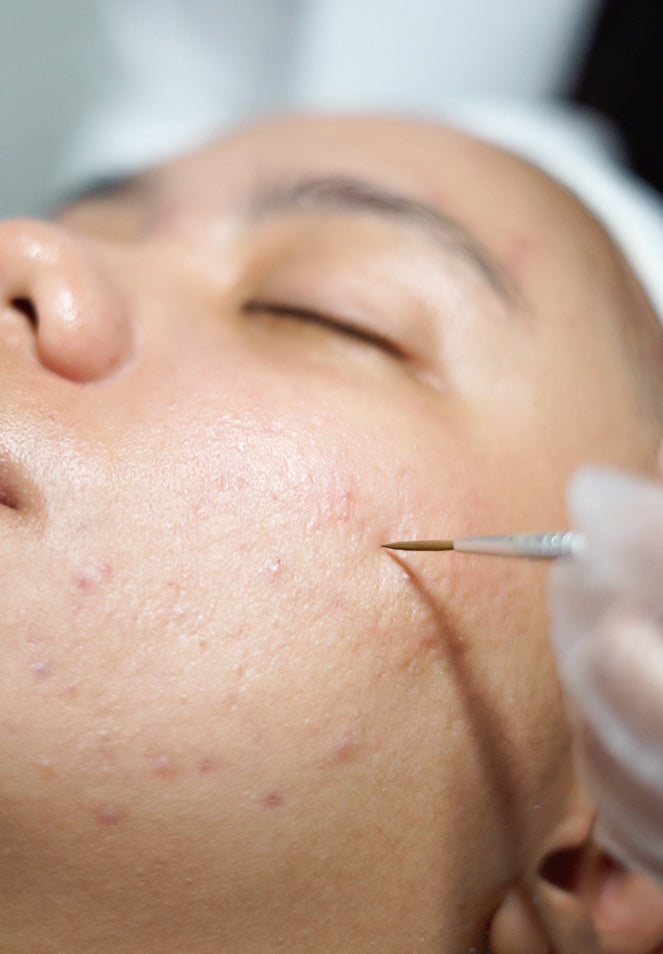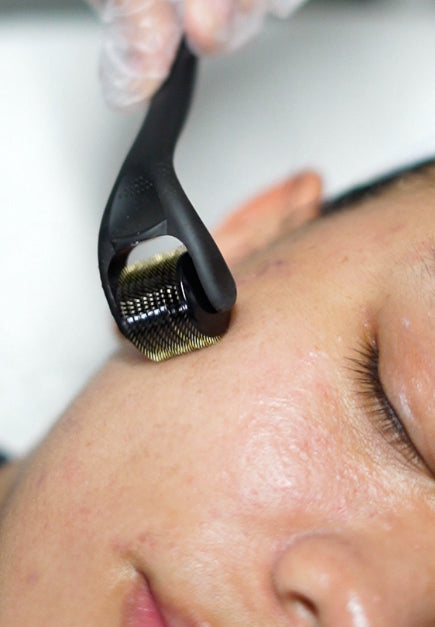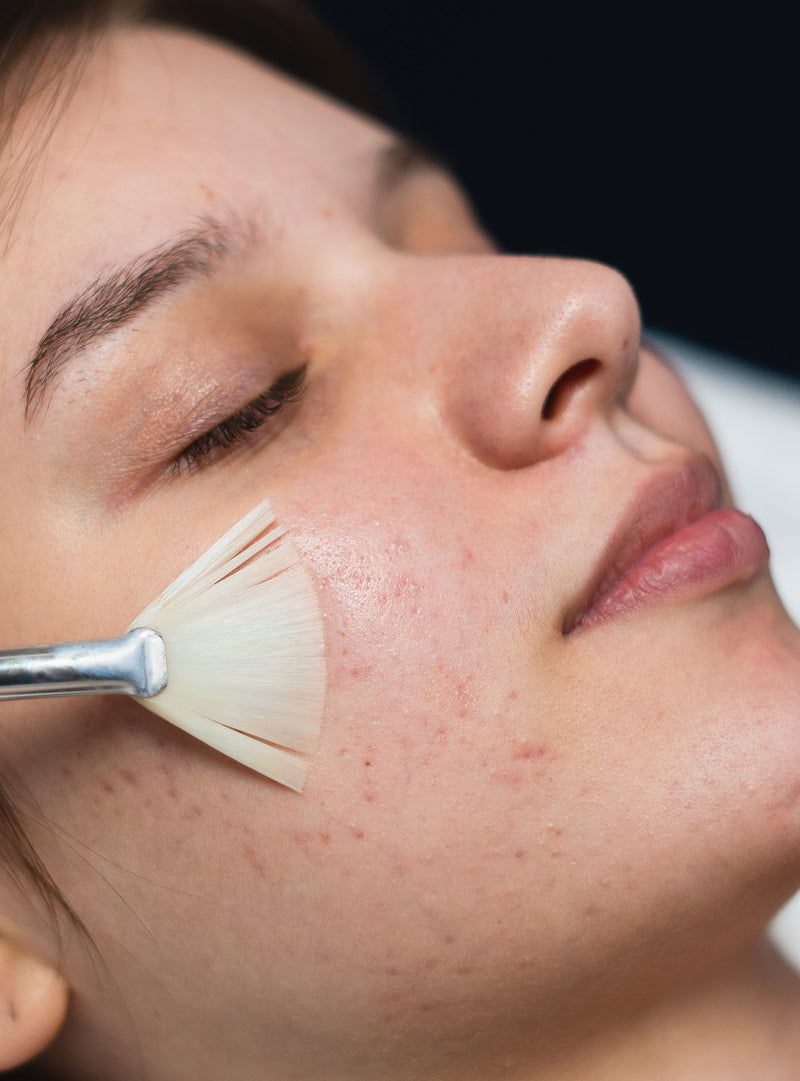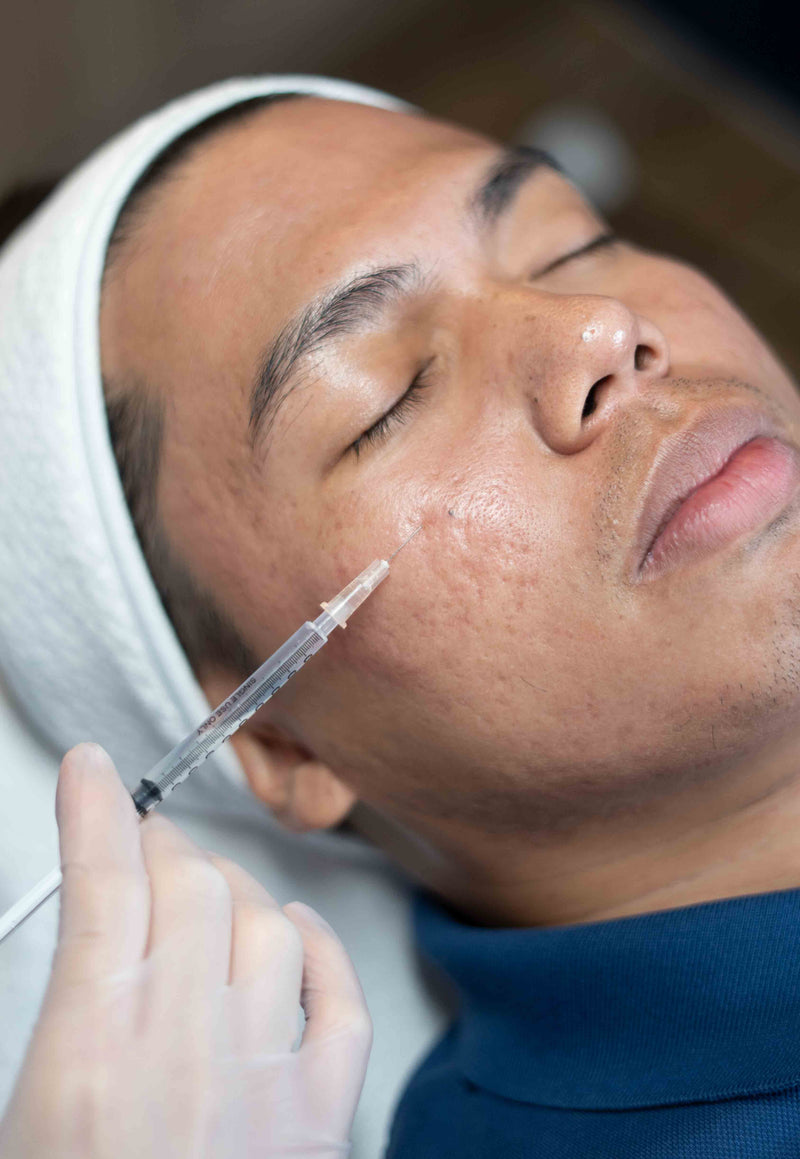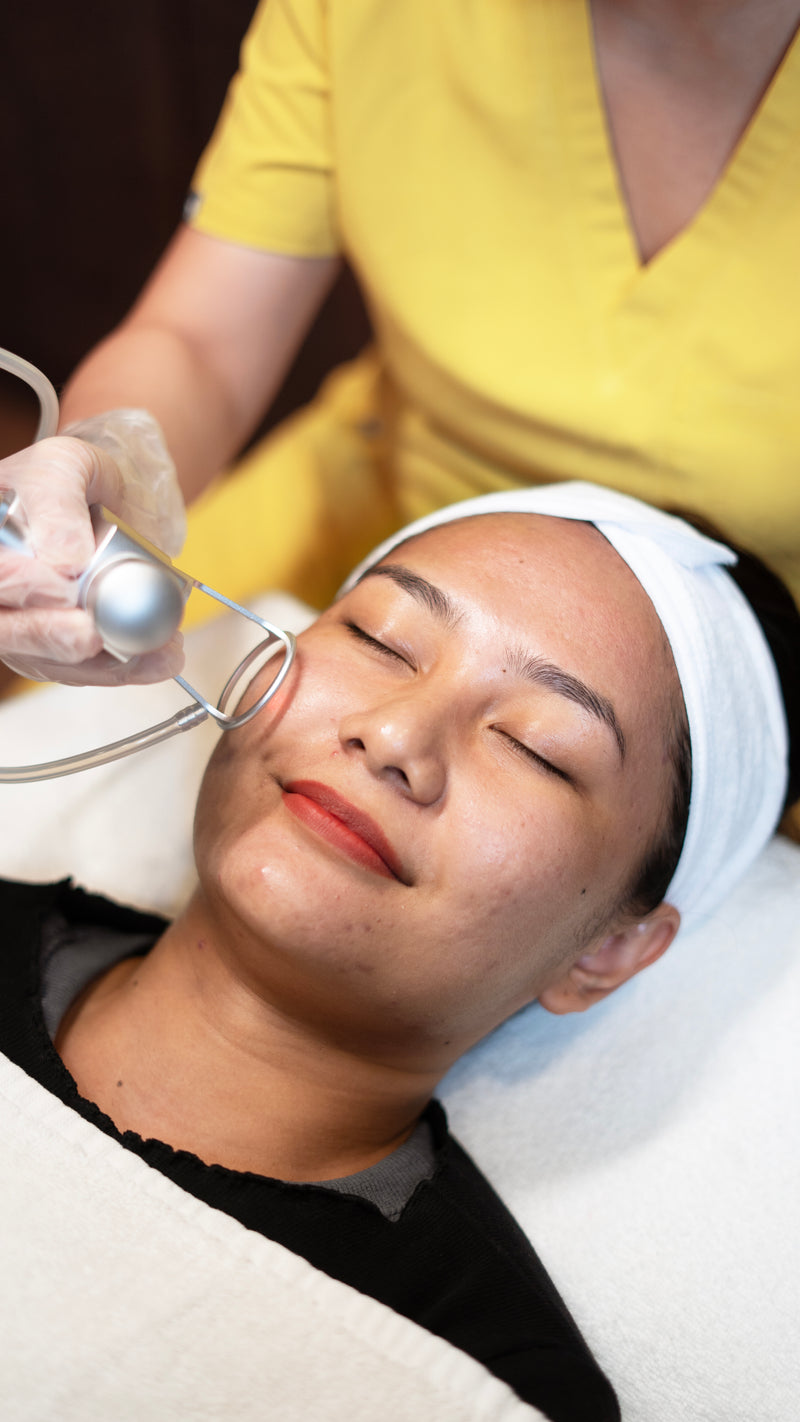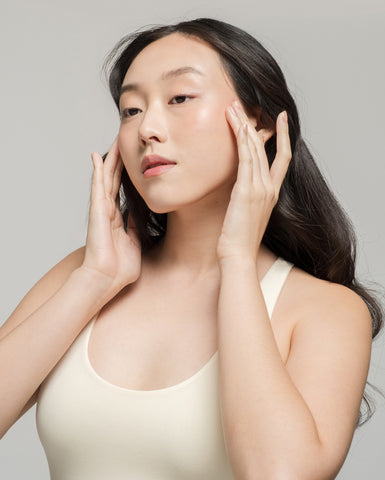All About Acne Scars
Breakouts may fade, but scars can linger longer than we’d like. Here’s what causes them, how to treat them, and why you don’t have to live with them forever.
What are acne scars?
Acne scars form as part of your skin’s natural healing process after a breakout.
While some pimples fade away without a trace, others can leave behind visible reminders in the form of scar tissue. These scars can vary in size, depth, texture, and color. They appear as indented craters, raised bumps, or a mix of both.
What Causes Acne Scars?
Acne scars form in stages—and understanding these phases can help you treat or even prevent them:
1. Inflammation
When a pimple forms, it traps oil, dead skin, and bacteria in your pores. This triggers your immune system, leading to redness, swelling, and tissue damage. The more inflamed or persistent the breakout, the higher the risk of permanent scarring.
2. Healing
As your skin begins to repair itself, it forms new blood vessels (causing that lingering redness) and produces collagen to rebuild the skin.
3. Strengthening
This is where it gets tricky:
- If your skin doesn’t make enough collagen, atrophic scars (sunken or indented) can form.
- If it makes too much, hypertrophic or keloid scars (raised or bumpy) can develop.
In short: the type of scar you develop depends on how your skin balances collagen production during healing.
Types of Acne Scars
- The most common type. These appear as indents or pits due to collagen loss.
- Rolling Scars: Wide and shallow depressions with sloped edges
- Boxcar Scars: Round or oval-shaped scars with sharp edges—can be shallow or deep
- Ice Pick Scars: Deep, narrow pits that look like tiny holes in the skin
- Hypertrophic Scars
These are raised, firm bumps that stay within the boundary of the original breakout. - Keloid Scars
More severe than hypertrophic scars, keloids grow beyond the original wound site and can continue to enlarge over time.
Acne Scars vs Acne Marks
They may look alike, but they’re not the same:
- Acne marks are discolorations left behind after a breakout. These are not permanent and usually fade with time or treatment.
- Post-inflammatory hyperpigmentation (PIH): Brown or dark spots
- Post-inflammatory erythema (PIE): Pink or red marks
Acne scars are textural changes in the skin caused by deeper inflammation and tissue damage. These require more targeted treatments to smooth out.
How To Treat Acne Scars
No single treatment works for everyone, so your best bet? A board-certified dermatologist who can recommend a plan based on your skin and scar type. Here are the most effective options available:
- Dermabrasion: A technique that sands away the top layer of skin to reduce scar depth and improve skin texture.
- Laser Therapy: High-intensity light targets damaged skin and stimulates new cell growth, helping to smooth and resurface acne scars.
- Chemical Peels: Acid-based peels exfoliate the outer skin layer, reducing the appearance of shallow scars and revealing fresher, smoother skin underneath.
- Microneedling: Creates micro-injuries in the skin to trigger collagen production. Great for atrophic scars, enlarged pores, and sun damage.
- PRP (Platelet-Rich Plasma): Uses growth factor-rich plasma from your own blood to boost skin healing and improve overall tone and texture.
- TCA Cross: Applies a high-concentration acid to ice pick and boxcar scars. The controlled damage stimulates collagen and helps fill in deep scars over time.
- Subcision: A minor surgical procedure that breaks up scar tissue under the skin to lift sunken scars and improve skin smoothness.
- Dermal Fillers: Injectable fillers (like hyaluronic acid) are used to “fill in” depressed scars, restoring volume and creating a more even skin surface.
Bottom Line
Acne scars can be stubborn, but they’re not untreatable. With the right diagnosis and a customized plan from your dermatologist, you can significantly reduce their appearance and improve your skin’s texture and tone.
Whether you’re dealing with deep craters, dark marks, or raised bumps, today’s treatments offer safe, proven, and visible results. All it takes is a little time, consistency, and the right skincare partner.
What are acne scars?
Acne scars form as part of your skin’s natural healing process after a breakout.
While some pimples fade away without a trace, others can leave behind visible reminders in the form of scar tissue. These scars can vary in size, depth, texture, and color. They appear as indented craters, raised bumps, or a mix of both.
What Causes Acne Scars?
Acne scars form in stages—and understanding these phases can help you treat or even prevent them:
1. Inflammation
When a pimple forms, it traps oil, dead skin, and bacteria in your pores. This triggers your immune system, leading to redness, swelling, and tissue damage. The more inflamed or persistent the breakout, the higher the risk of permanent scarring.
2. Healing
As your skin begins to repair itself, it forms new blood vessels (causing that lingering redness) and produces collagen to rebuild the skin.
3. Strengthening
This is where it gets tricky:
- If your skin doesn’t make enough collagen, atrophic scars (sunken or indented) can form.
- If it makes too much, hypertrophic or keloid scars (raised or bumpy) can develop.
In short: the type of scar you develop depends on how your skin balances collagen production during healing.
Types of Acne Scars
- The most common type. These appear as indents or pits due to collagen loss.
- Rolling Scars: Wide and shallow depressions with sloped edges
- Boxcar Scars: Round or oval-shaped scars with sharp edges—can be shallow or deep
- Ice Pick Scars: Deep, narrow pits that look like tiny holes in the skin
- Hypertrophic Scars
These are raised, firm bumps that stay within the boundary of the original breakout. - Keloid Scars
More severe than hypertrophic scars, keloids grow beyond the original wound site and can continue to enlarge over time.
Acne Scars vs Acne Marks
They may look alike, but they’re not the same:
- Acne marks are discolorations left behind after a breakout. These are not permanent and usually fade with time or treatment.
- Post-inflammatory hyperpigmentation (PIH): Brown or dark spots
- Post-inflammatory erythema (PIE): Pink or red marks
Acne scars are textural changes in the skin caused by deeper inflammation and tissue damage. These require more targeted treatments to smooth out.
How To Treat Acne Scars
No single treatment works for everyone, so your best bet? A board-certified dermatologist who can recommend a plan based on your skin and scar type. Here are the most effective options available:
- Dermabrasion: A technique that sands away the top layer of skin to reduce scar depth and improve skin texture.
- Laser Therapy: High-intensity light targets damaged skin and stimulates new cell growth, helping to smooth and resurface acne scars.
- Chemical Peels: Acid-based peels exfoliate the outer skin layer, reducing the appearance of shallow scars and revealing fresher, smoother skin underneath.
- Microneedling: Creates micro-injuries in the skin to trigger collagen production. Great for atrophic scars, enlarged pores, and sun damage.
- PRP (Platelet-Rich Plasma): Uses growth factor-rich plasma from your own blood to boost skin healing and improve overall tone and texture.
- TCA Cross: Applies a high-concentration acid to ice pick and boxcar scars. The controlled damage stimulates collagen and helps fill in deep scars over time.
- Subcision: A minor surgical procedure that breaks up scar tissue under the skin to lift sunken scars and improve skin smoothness.
- Dermal Fillers: Injectable fillers (like hyaluronic acid) are used to “fill in” depressed scars, restoring volume and creating a more even skin surface.
Bottom Line
Acne scars can be stubborn, but they’re not untreatable. With the right diagnosis and a customized plan from your dermatologist, you can significantly reduce their appearance and improve your skin’s texture and tone.
Whether you’re dealing with deep craters, dark marks, or raised bumps, today’s treatments offer safe, proven, and visible results. All it takes is a little time, consistency, and the right skincare partner.
